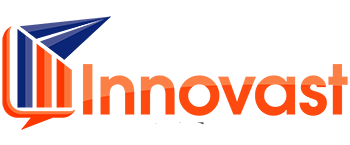When it comes to managing and optimizing your online presence, Google offers a suite of powerful tools—each designed for specific purposes. Google Analytics, Google Search Console, and Google Business Profile serve different but complementary roles in helping businesses track performance, improve visibility, and engage with their audience. Here’s how they differ and how you can use each effectively.
Google Analytics: Understanding Website Traffic
Google Analytics (GA) is all about your website’s visitors—where they come from, how they interact with your site, and what actions they take. It provides essential data on:
Traffic Sources – See whether visitors are coming from organic search, social media, paid ads, or referrals.
User Behavior – Track how long users stay on your site, which pages they visit, and where they drop off.
Conversions – Measure goal completions, such as form submissions, purchases, or sign-ups.
Audience Insights – Gain demographic and interest-based data about your visitors.
By using GA, businesses can make informed decisions about marketing strategies, website improvements, and user experience optimizations.
Google Search Console: Optimizing for Search Performance
While Google Analytics focuses on user behavior, Google Search Console (GSC) is designed to help website owners monitor and improve their site’s performance in Google Search results. GSC provides valuable insights into:
Search Queries – Discover what keywords people are using to find your website.
Indexing Status – Ensure that Google is properly indexing your pages.
Performance Metrics – View click-through rates (CTR), impressions, and average rankings for your pages.
Technical Issues – Identify and fix issues like mobile usability errors or crawl errors that can impact your search rankings.
GSC is an essential tool for SEO, allowing businesses to refine their search strategy and improve organic visibility.
Google Business Profile: Local Search Visibility & Engagement
Google Business Profile (GBP), formerly known as Google My Business, is critical for businesses looking to attract local customers. This tool manages how your business appears on Google Search and Google Maps. Key features include:
Business Listings – Display your business name, address, phone number, and hours of operation.
Customer Reviews – Respond to and manage customer feedback.
Posts & Updates – Share announcements, offers, and events to engage your audience.
Insights – Track how customers find your business and interact with your listing.
For businesses with a physical location or those serving local clients, GBP is essential for improving visibility and credibility in local search results.
How These Tools Work Together
Each of these tools serves a distinct role, but when used together, they provide a complete picture of your online performance:
Use Google Analytics to understand website traffic and customer behavior.
Leverage Google Search Console to optimize your website for better search rankings.
Maintain an active Google Business Profile to enhance local visibility and customer engagement.
By integrating insights from all three tools, businesses can refine their digital marketing strategies, improve user experience, and ultimately drive more conversions.
Need help making the most of these tools? Innovast Digital Marketing specializes in SEO, website optimization, and digital marketing strategies that maximize your online presence. Contact us today to learn how we can help your business grow!
Here’s a comparison table to help clarify the differences between Google Analytics, Google Search Console, and Google Business Profile:
Feature | Google Analytics (GA) | Google Search Console (GSC) | Google Business Profile (GBP) |
Primary Purpose | Tracks website traffic and user behavior | Monitors search performance and technical SEO | Manages local business visibility in Google Search & Maps |
Data Focus | User activity on your website | Website’s presence in Google Search | Business listing performance in local search |
Key Metrics | Page views, bounce rates, session duration, conversions | Click-through rates (CTR), impressions, keyword rankings, indexing issues | Searches, map views, website clicks, call requests, reviews |
SEO Insights | Helps understand how traffic behaves after arriving on-site | Provides keyword rankings and search performance data | Helps improve local search presence |
Traffic Sources | Tracks visitors from search, social media, paid ads, referrals | Focuses on Google Search performance only | Tracks customer interactions in Google Search & Maps |
User Behavior Tracking | Yes – shows what users do on the website | No – only tracks search performance before users reach the site | No – tracks engagement on the business listing (calls, messages, clicks) |
Website Health Monitoring | No – does not detect website errors | Yes – alerts about indexing issues, broken links, mobile usability | No – focuses on business listing details |
Ideal For | Marketers, website owners, eCommerce businesses | SEO professionals, webmasters, content creators | Local businesses, service providers, brick-and-mortar stores |
How It’s Accessed | analytics.google.com | search.google.com | google.com/business |


 Subscribe now and start gaining traction this week!
Subscribe now and start gaining traction this week!